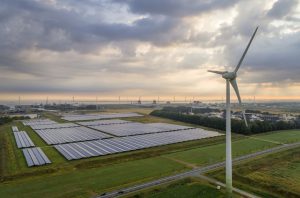Large computer clusters powering artificial intelligence tools such as Chat GPT are using four times more water than expected, according to a new report.
Experts from the University of California, Riverside have said that use of the chatbot for 10 to 50 queries consumes about two litres of water – mainly for cooling and power generation.
That figure is an update from a pre-print study from the academics released last year, which estimated that one 500ml bottle was used for that volume of questions, according to the London Times and other sources. They said the US researchers found they underestimated how ‘thirsty’ the chatbot was.
ALSO SEE: Foxconn Mega Factory to Build Nvidia Superchip AI Servers
The study titled ‘Making AI Less Thirsty’ is due to be published in ‘Communications of the ACM’, which is the monthly journal of the Association for Computing Machinery.
Shaolei Ren, a professor of electrical and computer engineering at Riverside, said the original “water footprint” calculation was based on a figure from OpenAI, which developed ChatGPT, in 2020.
But new figures released in September in a paper by Microsoft showed that GPT-3’s energy consumption “will be at least four times as much as the number that we used. This also means the water footprint should be increased four times.”
New data centres’ huge water demands
The US reportedly has more than 5,000 data centres and experts say they need cooling as most of the energy that computers require is converted into heat – and evaporates.
But servers built for AI purposes have greater power density demands because they process huge amounts of data and thus need greater cooling.
Server racks used by Nvidia allegedly generate 120kW of power, which was equivalent to 120 times ‘an old three-bar radiator’.
Systems used to cool data centres often have towers to evaporate the heat. But they also require treatment plants to ensure the water is clean because impurities can damage servers.
The latest news is likely to worry both environmentalists and big tech companies because new data centres could need the same amount of water as a large city, like Liverpool, in northern England.
Tech giants’ water use soaring
Tech giants such as Microsoft, Google and Meta have all reported double-digit increases in the amount of water their centres – of 22.5% and 17% (for the latter pair).
Amazon’s usage may be even higher, but it has not released its total water consumption details, allegedly because it believes such data is the wrong metric, the Times report said.
All of these conglomerates have pledged to be “water positive” by 2030 and have “schemes to put water back into nature, with projects that help river flow, capture rainwater, recharge acquifers and modify dams.”
But they are often not putting the water back in the same place where it was taken.
Microsoft has admitted that 41% of the 7,844 megalitres it consumed in 2023 were in areas of ‘water stress.’
Google was the biggest water consumer, using 24, 227 ML – three times more than Microsoft, while Meta used a much smaller 2,938 ML, it said.
‘Critical infrastructure’
Water UK has said that new data centres in Britain could need the same amount of water as half a million people, but currently they are not required to report how much water they consume.
In Ireland, data centres already account for 21% of the country’s power consumption, according to a report by the Irish Times in July.
But given their importance, data centres in the UK are set to be classed as critical national infrastructure, alongside emergency services, finance and healthcare systems, plus energy and water supplies, the BBC reported last month.
That means “they would get extra government support during a major incident, such as a cyber-attack, an IT outage or extreme weather, in order to minimise disruption,” it said.
Meanwhile, some companies are aiming to use air-cooling technology – and even AI tools – to reduce their data centres’ use of water.
Clearly, this is an issue likely to percolate for some time, in many parts of the world.
- Jim Pollard
ALSO SEE:
Big Tech’s Real Data Centre Emissions 660% Higher – The Guardian
Data Centre Boom Will Boost Clean Power Drive: Morgan Stanley
Spotlight on Big Tech’s Power and Water Use Amid AI Surge
Bold Climate Action Can be Great for Business, Study Finds
Google May Set up a ‘Hyperscale’ Data Centre in Vietnam
Microsoft Ramps up Cloud, AI, Data Centre Investment in SE Asia
China Aims for Self Sufficiency in Emerging Tech, AI, Big Data
UN Chief: Big Tech Chasing AI Profits Ignoring Risks – Guardian
























